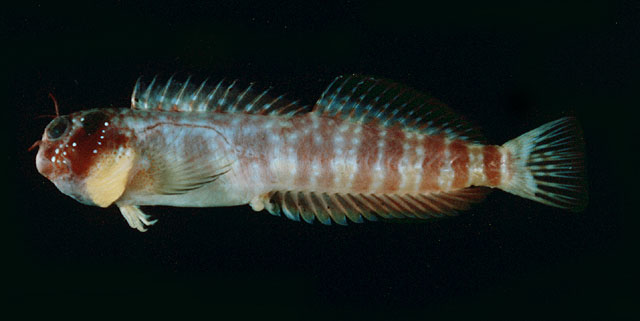| Blenniidae (Combtooth blennies), subfamily: Salariinae |
| 4.2 cm SL (male/unsexed) |
|
pelagic-neritic; marine; depth range 0 - 8 m |
| Eastern Central Pacific: Marquesas Islands. Also Western Central Pacific (Ref. 12848). |
|
Dorsal spines (total): 13-13; Dorsal soft rays (total): 15-16; Anal spines: 2-2; Anal soft rays: 17-18. Absence of cirri on nape and supraorbital tentacle; upper lip margin completely crenulate; body coloration light brown; numerous tiny white spots and lateral series of paired (except for first and last) 7 dark reddish brown bars across body; males with black spot (almost same size as orbit) behind eye and uneven dark brown in females; males possibly with wide yellow area over branchiostegal membranes. Dorsal spines XIII, 15-16 (typically 16); anal rays typically 18, lateral line terminating below 10th and 11th dorsal spines; gill rakers 13-14 (Ref. 54980). |
| Adults are found along rocky shores exposed to strong surge (Ref. 54980). Feeds on filamentous algae (Ref. 89972). Oviparous. Eggs are demersal and adhesive (Ref. 205), and are attached to the substrate via a filamentous, adhesive pad or pedestal (Ref. 94114). Larvae are planktonic, often found in shallow, coastal waters (Ref. 94114). |
|
Least Concern (LC); Date assessed: 27 March 2009 Ref. (130435)
|
| harmless |
Source and more info: www.fishbase.org. For personal, classroom, and other internal use only. Not for publication.
